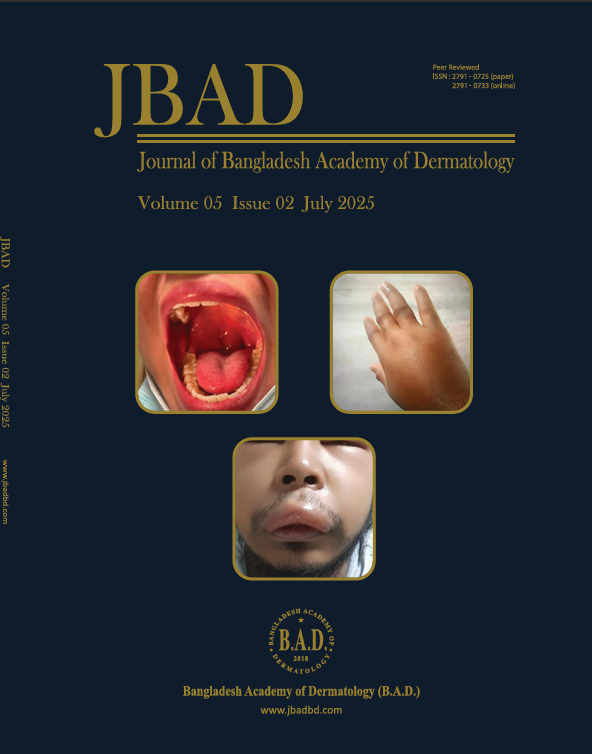Comparative study of two different regimens of oral azithromycin in the treatment of acne vulgaris
|
Abstract Objective: The purpose of the present study was to compare two regimens of oral azithromycin in the treatment of acne vulgaris. Methodology: This randomized open clinical trial was
carried out for six (06) months. Total sixty patients
with moderate to severe acne were randomly enrolled into
two equal groups (group A and B). Group-A received
oral azithromycin 250 mg daily for three consecutive days,
weekly for 12 weeks. Group-B has been treated with oral
azithromycin 500 mg daily on the first day and
250 mg for further two consecutive days weekly for
12 weeks. After the baseline visit patients were assessed
4th week, 8th week, and 12th week. They
were assessed for symptom severity, number of comedones, papule, pustule, side effects, and treatment response. |

